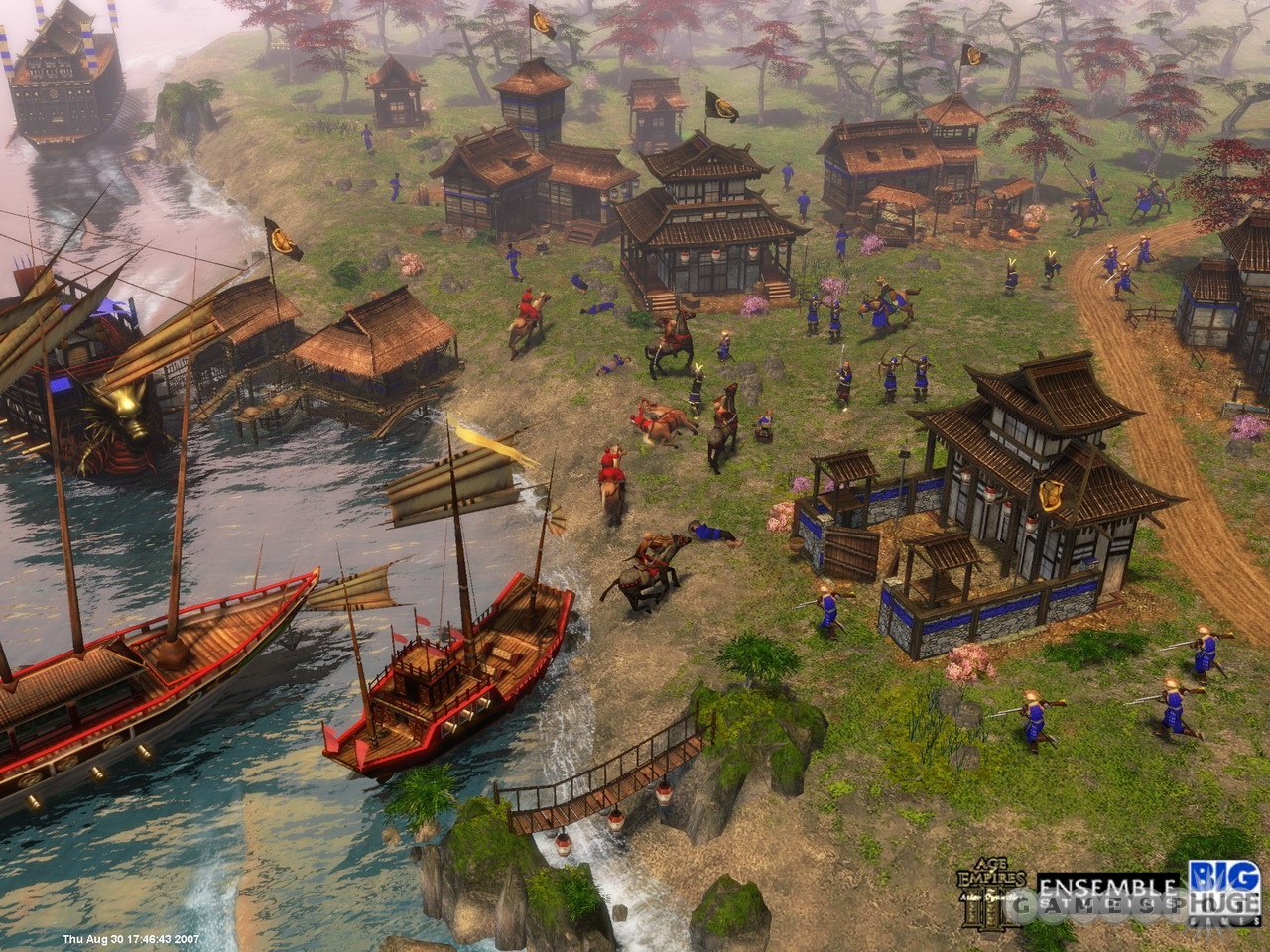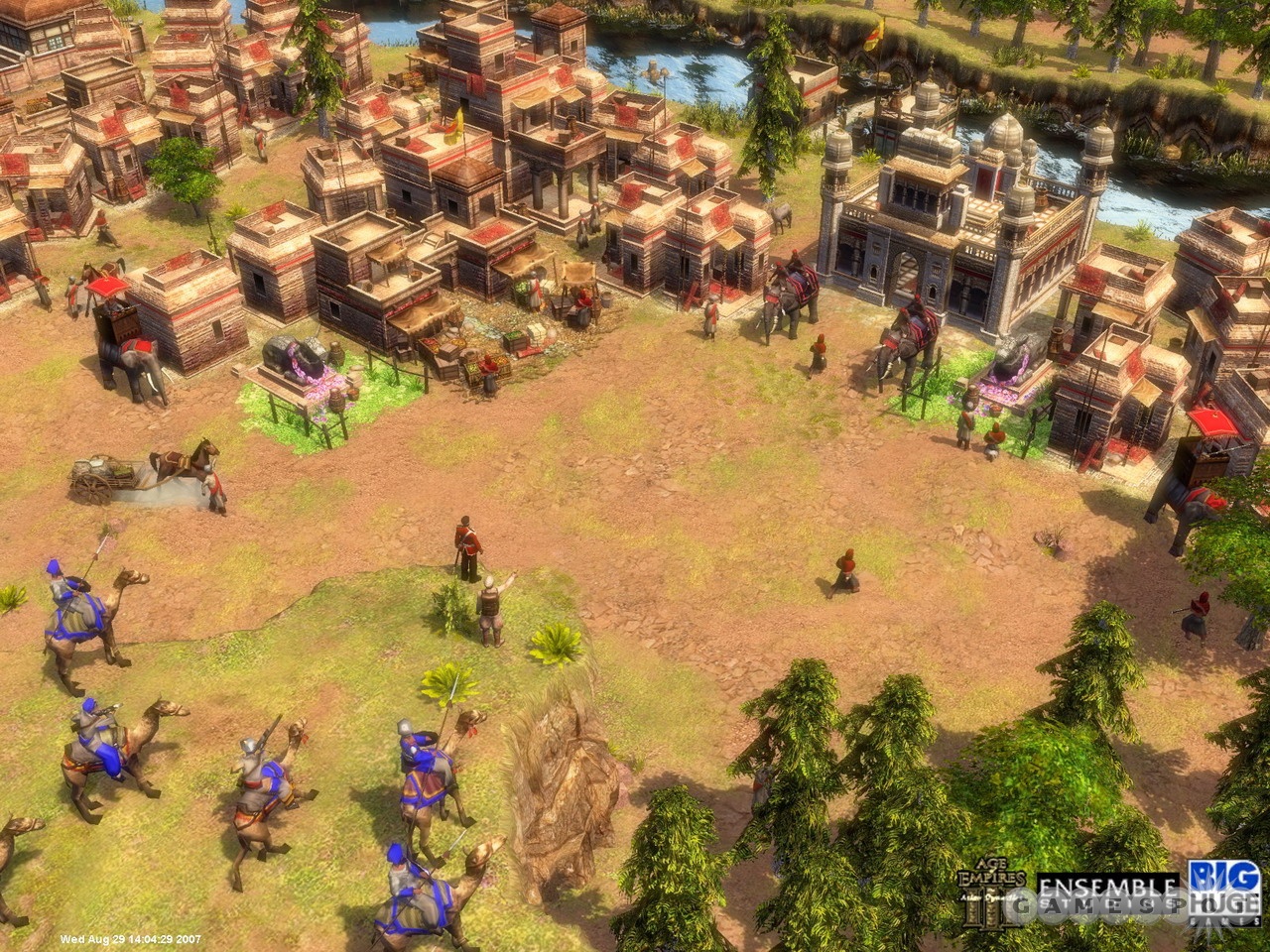Age of Empires III: The Asian Dynasties Hands-On - Wonders, Export, and Deeper Strategic Decisions
The second expansion pack for Age of Empires III adds three new civilizations and new layers of decision making.
In Age of Empires III, as well as its first expansion, The WarChiefs, you could control European and Native American civilizations in a battle for supremacy in the New World. With The Asian Dynasties, the second expansion, the focus will change to the other side of the world. However, this new expansion won't just offer up a new setting. The Asian Dynasties is being developed by Big Huge Games, the acclaimed creator of Rise of Nations, in cooperation with Ensemble Studios; thus, The Asian Dynasties is a merging of two strategy powerhouses, with Big Huge Games putting its own unique take on the series.

The Asian Dynasties introduces three new civilizations: China, Japan, and India. Each will have its own campaign of five missions each, covering different periods in history. There are a slew of new maps, covering the Silk Road, Borneo, Siberia, and more. You can, of course, take any of these Asian civilizations and play them in skirmish against other Age of Empires III civilization on any map. If you have the WarChiefs expansion, you can play against those civilizations as well.
Being an outsider to the series has allowed Big Huge Games to rethink a lot of the gameplay, with the result of injecting a lot more decision making into many levels of the game. For instance, many Age of Empires III players have already figured out what cards, or special shipments from their prospective civilization's home city, to play and in what order. The first card that most players played was the one that requests two or three more settlers because settlers are the backbone of any economy. When you're in a race to gather resources and construct buildings, the more settlers you have the better. However, the Chinese civilization will make you think twice about playing such a card early on because the Chinese card ties the number of settlers that you get with the number of villages and town centers you have. Villages are the Chinese version of houses, but they support much larger populations (20) and have other benefits, such as the ability to pen livestock. So if you're playing as the Chinese, you'll want to build as many villages as possible before playing that card to maximize the benefit. Because you can play most Asian home city cards twice, you can rapidly build up your population in little time.
Big Huge Games has also found a way to weave wonders back into the gameplay. In Age of Empires and Age of Empires II, you could build wonders of the world, which were huge structures that would impart some special benefit. Those wonders disappeared in Age of Empires III, but they're back in The Asian Dynasties. To advance an Asian civilization to the next age, you have to build a wonder that not only grants new units but can also provide special bonuses. For instance, the Great Buddha wonder has informer powers, which lets you temporarily see the location of enemy units and structures on the map. The thing is, each Asian civilization has five different wonders, but in a full game, you can only level up four times, which means you have to select which wonder gets left out. It can be a difficult decision because each wonder offers up a particularly useful ability.

Export is another neat new idea in the expansion. Basically, export is a third resource that's generated automatically by your workers because a small percentage of what they gather is directed toward export. You can raise your export rate to 5 and 10 percent, which increases the accumulation of export but slightly hampers your economy. However, you can then use export in conjunction with the consulate building to purchase weapons and even armies from whichever European power is your ally. We used export to purchase a small Dutch army, complete with cannons, to augment our Japanese army. Even better, this Dutch army arrived even though we had almost maxed our population capacity. So if you have a population of 139 out of a 140-population capacity, these export armies can still show up, and if done right, you can overwhelm your opponent with units.
Each of the civilizations plays quite differently from one another, as well as any previous Age of Empires III game. For instance, the Japanese build shrines rather than houses, which can generate food by attracting native wildlife. Because of that fact, you want to spread your shrines around the map, rather than cluster them together for protection. The Indians have a wood-based economy, so wood--not food--is more important. Also, the Indians can boost their civilization rapidly, thanks to the fact that each of their home city shipments comes with a free villager. We already mentioned the Chinese and their ability to rapidly boost their population. There's much more differentiation, but the key was that each civilization does bring a fresh approach to the game. Not surprisingly, The Asian Dynasties feels like Age of Empires III blended with a small amount of Rise of Nations. The expansion is almost done and will ship later this year.
Got a news tip or want to contact us directly? Email news@gamespot.com
Join the conversation